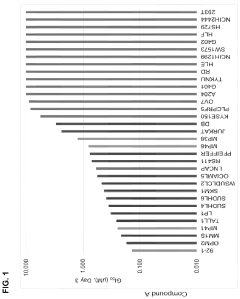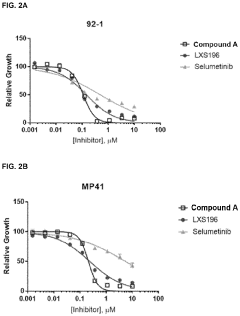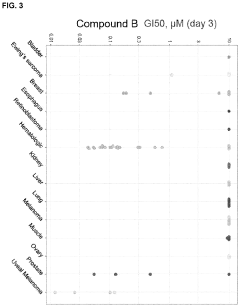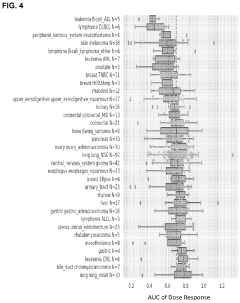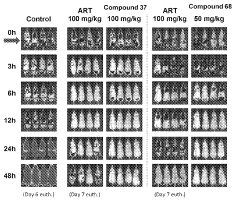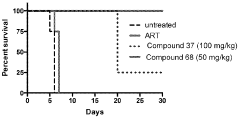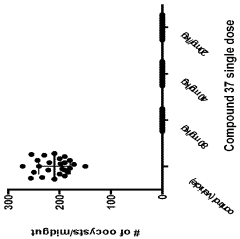Role of Geometric Isomers in Synthetic Polymer Properties
AUG 1, 202510 MIN READ
Generate Your Research Report Instantly with AI Agent
Patsnap Eureka helps you evaluate technical feasibility & market potential.
Geometric Isomers in Polymers: Background and Objectives
Geometric isomers play a crucial role in determining the properties of synthetic polymers, a field that has seen significant advancements over the past few decades. The study of these isomers has become increasingly important as researchers and industry professionals seek to develop materials with tailored characteristics for specific applications.
The concept of geometric isomerism in polymers refers to the spatial arrangement of atoms or groups along the polymer backbone. This arrangement can significantly influence the physical, chemical, and mechanical properties of the resulting material. The exploration of geometric isomers in polymer science dates back to the mid-20th century, with pioneering work by researchers such as Paul Flory and Maurice Huggins.
As the field progressed, scientists began to recognize the profound impact that subtle changes in molecular structure could have on macroscopic properties. This realization led to a surge in research aimed at understanding and controlling the formation of specific geometric isomers during polymer synthesis. The ability to manipulate these structures opened up new possibilities for creating materials with enhanced performance characteristics.
One of the primary objectives in studying geometric isomers in polymers is to establish clear structure-property relationships. By understanding how different isomeric configurations affect properties such as crystallinity, glass transition temperature, and mechanical strength, researchers can design polymers with precise attributes for targeted applications. This knowledge is particularly valuable in industries such as automotive, aerospace, and biomedical engineering, where material performance is critical.
Another key goal is to develop synthetic strategies that allow for greater control over the formation of specific geometric isomers. This includes the exploration of novel catalysts, polymerization techniques, and post-synthesis modification methods. By refining these processes, researchers aim to achieve higher levels of precision in polymer architecture, leading to more consistent and predictable material properties.
The study of geometric isomers in polymers also intersects with broader trends in materials science, such as the push for more sustainable and environmentally friendly materials. Understanding how isomeric structures influence biodegradability and recyclability is becoming increasingly important as industries seek to reduce their environmental impact.
As technology advances, the objectives in this field continue to evolve. Current research aims to leverage computational modeling and machine learning techniques to predict the behavior of polymers based on their isomeric composition. This approach promises to accelerate the development of new materials by reducing the need for extensive experimental trials.
The concept of geometric isomerism in polymers refers to the spatial arrangement of atoms or groups along the polymer backbone. This arrangement can significantly influence the physical, chemical, and mechanical properties of the resulting material. The exploration of geometric isomers in polymer science dates back to the mid-20th century, with pioneering work by researchers such as Paul Flory and Maurice Huggins.
As the field progressed, scientists began to recognize the profound impact that subtle changes in molecular structure could have on macroscopic properties. This realization led to a surge in research aimed at understanding and controlling the formation of specific geometric isomers during polymer synthesis. The ability to manipulate these structures opened up new possibilities for creating materials with enhanced performance characteristics.
One of the primary objectives in studying geometric isomers in polymers is to establish clear structure-property relationships. By understanding how different isomeric configurations affect properties such as crystallinity, glass transition temperature, and mechanical strength, researchers can design polymers with precise attributes for targeted applications. This knowledge is particularly valuable in industries such as automotive, aerospace, and biomedical engineering, where material performance is critical.
Another key goal is to develop synthetic strategies that allow for greater control over the formation of specific geometric isomers. This includes the exploration of novel catalysts, polymerization techniques, and post-synthesis modification methods. By refining these processes, researchers aim to achieve higher levels of precision in polymer architecture, leading to more consistent and predictable material properties.
The study of geometric isomers in polymers also intersects with broader trends in materials science, such as the push for more sustainable and environmentally friendly materials. Understanding how isomeric structures influence biodegradability and recyclability is becoming increasingly important as industries seek to reduce their environmental impact.
As technology advances, the objectives in this field continue to evolve. Current research aims to leverage computational modeling and machine learning techniques to predict the behavior of polymers based on their isomeric composition. This approach promises to accelerate the development of new materials by reducing the need for extensive experimental trials.
Market Analysis for Isomer-Controlled Polymers
The market for isomer-controlled polymers is experiencing significant growth, driven by increasing demand for high-performance materials across various industries. The unique properties imparted by geometric isomers in synthetic polymers have opened up new opportunities for product development and innovation. Key sectors driving this market include automotive, aerospace, electronics, and healthcare.
In the automotive industry, isomer-controlled polymers are gaining traction for their ability to enhance fuel efficiency through lightweight components and improve durability of vehicle parts. The aerospace sector is leveraging these materials for their superior strength-to-weight ratio, thermal stability, and resistance to extreme conditions. The electronics industry is adopting isomer-controlled polymers for their excellent electrical insulation properties and potential in flexible electronics.
The healthcare sector presents a particularly promising market for isomer-controlled polymers. These materials are being explored for drug delivery systems, tissue engineering, and medical devices due to their biocompatibility and tunable properties. The ability to control polymer structure at the molecular level allows for precise tailoring of material properties, opening up new possibilities in personalized medicine and advanced medical treatments.
Market analysis indicates a compound annual growth rate (CAGR) for isomer-controlled polymers exceeding the overall polymer market growth. This is attributed to the increasing recognition of their value in high-tech applications and the ongoing shift towards more sustainable and efficient materials. The Asia-Pacific region is expected to witness the highest growth rate, driven by rapid industrialization and increasing investments in research and development.
However, challenges remain in scaling up production and reducing costs associated with isomer-controlled polymer synthesis. The market is currently dominated by specialty chemical companies and advanced materials manufacturers with strong research capabilities. As production processes become more efficient and economies of scale are achieved, it is anticipated that isomer-controlled polymers will penetrate broader markets and applications.
Emerging trends in the market include the development of bio-based isomer-controlled polymers, addressing the growing demand for sustainable materials. Additionally, advancements in polymer characterization techniques and computational modeling are accelerating the discovery and optimization of new isomer-controlled polymer structures, potentially expanding the market further.
The regulatory landscape is evolving to address the unique properties and potential applications of isomer-controlled polymers, particularly in sensitive sectors like healthcare and food packaging. This regulatory development is expected to provide clarity and potentially accelerate market adoption in certain applications while ensuring safety and quality standards are met.
In the automotive industry, isomer-controlled polymers are gaining traction for their ability to enhance fuel efficiency through lightweight components and improve durability of vehicle parts. The aerospace sector is leveraging these materials for their superior strength-to-weight ratio, thermal stability, and resistance to extreme conditions. The electronics industry is adopting isomer-controlled polymers for their excellent electrical insulation properties and potential in flexible electronics.
The healthcare sector presents a particularly promising market for isomer-controlled polymers. These materials are being explored for drug delivery systems, tissue engineering, and medical devices due to their biocompatibility and tunable properties. The ability to control polymer structure at the molecular level allows for precise tailoring of material properties, opening up new possibilities in personalized medicine and advanced medical treatments.
Market analysis indicates a compound annual growth rate (CAGR) for isomer-controlled polymers exceeding the overall polymer market growth. This is attributed to the increasing recognition of their value in high-tech applications and the ongoing shift towards more sustainable and efficient materials. The Asia-Pacific region is expected to witness the highest growth rate, driven by rapid industrialization and increasing investments in research and development.
However, challenges remain in scaling up production and reducing costs associated with isomer-controlled polymer synthesis. The market is currently dominated by specialty chemical companies and advanced materials manufacturers with strong research capabilities. As production processes become more efficient and economies of scale are achieved, it is anticipated that isomer-controlled polymers will penetrate broader markets and applications.
Emerging trends in the market include the development of bio-based isomer-controlled polymers, addressing the growing demand for sustainable materials. Additionally, advancements in polymer characterization techniques and computational modeling are accelerating the discovery and optimization of new isomer-controlled polymer structures, potentially expanding the market further.
The regulatory landscape is evolving to address the unique properties and potential applications of isomer-controlled polymers, particularly in sensitive sectors like healthcare and food packaging. This regulatory development is expected to provide clarity and potentially accelerate market adoption in certain applications while ensuring safety and quality standards are met.
Current Challenges in Geometric Isomer Control
The control of geometric isomers in synthetic polymer production presents several significant challenges that researchers and manufacturers are actively working to overcome. One of the primary difficulties lies in the precise manipulation of molecular structures during polymerization processes. The spatial arrangement of atoms in geometric isomers can significantly impact the properties of the resulting polymers, making it crucial to achieve selective isomer formation.
A major challenge is the development of catalysts that can effectively discriminate between different geometric configurations. Current catalytic systems often lack the specificity required to produce a high yield of the desired isomer. This limitation results in mixtures of isomers, which can lead to inconsistent polymer properties and reduced performance in final products. Researchers are exploring novel catalyst designs, including metal-organic frameworks and enzyme-inspired systems, to enhance selectivity.
Temperature control during polymerization is another critical factor that poses challenges in geometric isomer control. The energy barriers between different isomeric forms can be relatively small, allowing for interconversion between configurations at elevated temperatures. Maintaining precise temperature profiles throughout the reaction process is technically demanding, especially in large-scale industrial settings. Innovations in reactor design and heat management systems are being pursued to address this issue.
The influence of solvent systems on isomer distribution adds another layer of complexity to the control process. Solvents can interact with growing polymer chains and affect the stability of different geometric configurations. Finding the optimal solvent or solvent mixture that promotes the formation of the desired isomer while maintaining other desirable reaction conditions is an ongoing area of research. This challenge is compounded by the need to consider environmental and safety factors in solvent selection.
Monitoring and characterization of geometric isomers during polymer synthesis present additional hurdles. Real-time analysis of isomer ratios is crucial for process control but remains technically challenging. Advanced spectroscopic techniques, such as in-situ NMR and Raman spectroscopy, are being developed to provide more accurate and timely information on isomer distribution during polymerization. However, integrating these analytical methods into industrial-scale processes without disrupting production flow is a significant engineering challenge.
The scalability of laboratory-developed methods for geometric isomer control to industrial production levels is a persistent issue. Techniques that work well in small-scale experiments often face unforeseen complications when scaled up. Factors such as heat and mass transfer limitations, mixing efficiency, and reaction kinetics can behave differently at larger scales, potentially altering isomer distributions. Bridging this gap requires extensive process engineering and often necessitates the development of new technologies specifically designed for large-scale isomer control.
A major challenge is the development of catalysts that can effectively discriminate between different geometric configurations. Current catalytic systems often lack the specificity required to produce a high yield of the desired isomer. This limitation results in mixtures of isomers, which can lead to inconsistent polymer properties and reduced performance in final products. Researchers are exploring novel catalyst designs, including metal-organic frameworks and enzyme-inspired systems, to enhance selectivity.
Temperature control during polymerization is another critical factor that poses challenges in geometric isomer control. The energy barriers between different isomeric forms can be relatively small, allowing for interconversion between configurations at elevated temperatures. Maintaining precise temperature profiles throughout the reaction process is technically demanding, especially in large-scale industrial settings. Innovations in reactor design and heat management systems are being pursued to address this issue.
The influence of solvent systems on isomer distribution adds another layer of complexity to the control process. Solvents can interact with growing polymer chains and affect the stability of different geometric configurations. Finding the optimal solvent or solvent mixture that promotes the formation of the desired isomer while maintaining other desirable reaction conditions is an ongoing area of research. This challenge is compounded by the need to consider environmental and safety factors in solvent selection.
Monitoring and characterization of geometric isomers during polymer synthesis present additional hurdles. Real-time analysis of isomer ratios is crucial for process control but remains technically challenging. Advanced spectroscopic techniques, such as in-situ NMR and Raman spectroscopy, are being developed to provide more accurate and timely information on isomer distribution during polymerization. However, integrating these analytical methods into industrial-scale processes without disrupting production flow is a significant engineering challenge.
The scalability of laboratory-developed methods for geometric isomer control to industrial production levels is a persistent issue. Techniques that work well in small-scale experiments often face unforeseen complications when scaled up. Factors such as heat and mass transfer limitations, mixing efficiency, and reaction kinetics can behave differently at larger scales, potentially altering isomer distributions. Bridging this gap requires extensive process engineering and often necessitates the development of new technologies specifically designed for large-scale isomer control.
Existing Methods for Geometric Isomer Control
01 Stereochemistry and properties of geometric isomers in synthetic polymers
Geometric isomers in synthetic polymers can significantly influence their physical and chemical properties. The spatial arrangement of atoms in these isomers affects characteristics such as crystallinity, melting point, and solubility. Understanding and controlling the formation of specific geometric isomers during polymer synthesis can lead to tailored material properties for various applications.- Stereochemistry and properties of geometric isomers in synthetic polymers: Geometric isomers in synthetic polymers can significantly influence their physical and chemical properties. The spatial arrangement of atoms in these isomers affects characteristics such as crystallinity, melting point, and solubility. Understanding and controlling the formation of specific geometric isomers during polymer synthesis can lead to tailored material properties for various applications.
- Synthesis methods for controlling geometric isomerism in polymers: Various synthesis techniques can be employed to control the formation of specific geometric isomers in synthetic polymers. These methods may include catalytic processes, temperature control, and the use of specific monomers or initiators. By manipulating reaction conditions, researchers can influence the ratio of different geometric isomers, leading to polymers with desired properties.
- Characterization techniques for geometric isomers in polymers: Advanced analytical techniques are crucial for identifying and quantifying geometric isomers in synthetic polymers. Methods such as NMR spectroscopy, X-ray diffraction, and chromatography can be used to determine the presence and relative abundance of different isomers. These characterization techniques are essential for understanding structure-property relationships in polymeric materials.
- Applications of geometric isomers in polymer-based technologies: The unique properties of geometric isomers in synthetic polymers can be exploited in various technological applications. These may include advanced materials for electronics, optical devices, and biomedical applications. By controlling the isomeric composition, researchers can develop polymers with specific functionalities, such as improved conductivity or biocompatibility.
- Environmental and degradation aspects of geometric isomers in polymers: The presence of different geometric isomers in synthetic polymers can affect their environmental impact and degradation behavior. Some isomeric configurations may be more susceptible to biodegradation or photodegradation, influencing the polymer's lifecycle and potential for recycling. Understanding these aspects is crucial for developing more sustainable polymer materials.
02 Synthesis methods for controlling geometric isomerism in polymers
Various synthesis techniques can be employed to control the formation of specific geometric isomers in synthetic polymers. These methods may include the use of stereospecific catalysts, controlled polymerization conditions, or post-polymerization modifications. By manipulating these factors, researchers can achieve desired ratios of geometric isomers and optimize polymer properties for specific applications.Expand Specific Solutions03 Characterization techniques for geometric isomers in polymers
Advanced analytical techniques are crucial for identifying and quantifying geometric isomers in synthetic polymers. Methods such as NMR spectroscopy, X-ray diffraction, and chromatography can be used to determine the presence and relative abundance of different isomers. These characterization techniques are essential for understanding structure-property relationships and quality control in polymer production.Expand Specific Solutions04 Applications of geometric isomers in polymer-based materials
The unique properties of geometric isomers in synthetic polymers can be exploited for various applications. These may include advanced materials for electronics, biomedical devices, or high-performance plastics. By controlling the isomeric composition, materials with specific optical, mechanical, or thermal properties can be developed to meet the demands of diverse industries.Expand Specific Solutions05 Environmental and degradation behavior of geometric isomers in polymers
The environmental impact and degradation characteristics of synthetic polymers can be influenced by their geometric isomer composition. Different isomers may exhibit varying susceptibility to biodegradation, photodegradation, or chemical decomposition. Understanding these relationships is crucial for developing more sustainable and environmentally friendly polymer materials with controlled lifespans and degradation profiles.Expand Specific Solutions
Key Players in Isomer-Specific Polymer Synthesis
The competitive landscape for "Role of Geometric Isomers in Synthetic Polymer Properties" is in a growth phase, with increasing market size and technological advancements. The industry is characterized by a mix of established players and emerging companies, reflecting the evolving nature of polymer science. Companies like Schlumberger Technologies, Inc. and Bayer CropScience LP are leveraging their extensive R&D capabilities to explore geometric isomers' impact on polymer properties. Academic institutions such as The Regents of the University of California and Texas A&M University are contributing significantly to fundamental research. The technology's maturity is progressing, with firms like Foghorn Therapeutics, Inc. and Dizal (Jiangsu) Pharmaceutical Co., Ltd. applying these concepts in novel drug delivery systems and materials development.
The Regents of the University of California
Technical Solution: The University of California has developed advanced techniques for controlling geometric isomerism in synthetic polymers. They utilize catalytic systems that can selectively produce specific geometric isomers during polymerization[1]. Their approach involves the use of stereospecific catalysts that can control the spatial arrangement of substituents along the polymer backbone[2]. This allows for the precise engineering of polymer properties such as crystallinity, melting point, and mechanical strength. The university has also pioneered methods for post-polymerization isomerization, enabling the modification of existing polymers to alter their properties[3]. Their research extends to the development of stimuli-responsive polymers where geometric isomerism can be switched on demand, leading to materials with adaptive properties[4].
Strengths: Cutting-edge research in catalyst design and polymer engineering. Ability to create highly specialized materials with tunable properties. Weaknesses: Potential scalability issues for industrial production. Higher costs associated with complex catalytic systems.
Trustees of the University of Pennsylvania
Technical Solution: The University of Pennsylvania has made significant strides in understanding and manipulating geometric isomers in synthetic polymers. Their research focuses on the relationship between geometric isomerism and polymer chain dynamics[1]. They have developed novel spectroscopic techniques to characterize the distribution of geometric isomers within polymer samples with unprecedented precision[2]. The university's team has also created computational models that predict how different ratios of geometric isomers affect bulk polymer properties[3]. Their work extends to the design of block copolymers where geometric isomerism is used to control microphase separation, leading to new nanostructured materials[4]. Additionally, they have explored the use of geometric isomerism to create polymers with shape-memory properties[5].
Strengths: Advanced characterization techniques and predictive modeling capabilities. Innovative applications in nanostructured and smart materials. Weaknesses: May be more focused on fundamental research rather than immediate industrial applications.
Innovative Approaches in Isomer-Specific Catalysis
Compounds and uses thereof
PatentPendingUS20230145003A1
Innovation
- Development of specific compounds that modulate the BAF complex by inhibiting BRG1 and/or BRM activity, which can be used alone or in combination with other pharmaceutically active agents to treat disorders like cancer.
Compounds and methods for the treatment of malaria
PatentInactiveIN202118043692A
Innovation
- Development of specific compounds, such as those represented by Formula I and listed in Table 1, which offer new structural features and functional groups to target malaria parasites effectively, including those resistant to existing drugs.
Environmental Impact of Isomer-Controlled Synthesis
The environmental impact of isomer-controlled synthesis in polymer production is a critical consideration as the industry moves towards more sustainable practices. Geometric isomers play a significant role in determining the properties of synthetic polymers, and their controlled synthesis can have both positive and negative environmental implications.
One of the primary environmental benefits of isomer-controlled synthesis is the potential for improved material efficiency. By precisely controlling the isomeric composition of polymers, manufacturers can optimize their properties for specific applications. This optimization can lead to reduced material usage, as less polymer is needed to achieve the desired performance characteristics. Consequently, this can result in a decrease in raw material consumption and energy requirements during production.
However, the process of isomer-controlled synthesis often requires more sophisticated and energy-intensive manufacturing techniques. These advanced processes may involve higher temperatures, pressures, or the use of specialized catalysts, potentially increasing the carbon footprint of production. The environmental trade-off between improved material efficiency and increased energy consumption must be carefully evaluated on a case-by-case basis.
The use of isomer-controlled polymers can also contribute to the development of more durable and long-lasting products. By tailoring the isomeric structure, polymers can be engineered to have enhanced resistance to degradation, UV radiation, and chemical exposure. This increased durability can extend product lifespans, reducing the frequency of replacement and ultimately decreasing waste generation. However, the improved stability of these polymers may also present challenges for end-of-life management and recycling.
In terms of recyclability, isomer-controlled polymers may offer both advantages and disadvantages. On one hand, the precise control of isomeric composition can lead to more homogeneous materials, potentially simplifying recycling processes. On the other hand, the specialized nature of these polymers may require the development of new recycling technologies to effectively separate and reprocess them.
The environmental impact of isomer-controlled synthesis extends to the realm of biodegradability as well. While some isomeric structures can be designed to enhance biodegradability, others may result in more persistent materials. The balance between durability and environmental persistence is a key consideration in the development of sustainable polymer materials.
As the industry continues to advance, there is growing interest in developing bio-based and renewable feedstocks for isomer-controlled polymer synthesis. This shift towards sustainable raw materials could significantly reduce the environmental footprint of polymer production, aligning with circular economy principles and reducing dependence on fossil resources.
One of the primary environmental benefits of isomer-controlled synthesis is the potential for improved material efficiency. By precisely controlling the isomeric composition of polymers, manufacturers can optimize their properties for specific applications. This optimization can lead to reduced material usage, as less polymer is needed to achieve the desired performance characteristics. Consequently, this can result in a decrease in raw material consumption and energy requirements during production.
However, the process of isomer-controlled synthesis often requires more sophisticated and energy-intensive manufacturing techniques. These advanced processes may involve higher temperatures, pressures, or the use of specialized catalysts, potentially increasing the carbon footprint of production. The environmental trade-off between improved material efficiency and increased energy consumption must be carefully evaluated on a case-by-case basis.
The use of isomer-controlled polymers can also contribute to the development of more durable and long-lasting products. By tailoring the isomeric structure, polymers can be engineered to have enhanced resistance to degradation, UV radiation, and chemical exposure. This increased durability can extend product lifespans, reducing the frequency of replacement and ultimately decreasing waste generation. However, the improved stability of these polymers may also present challenges for end-of-life management and recycling.
In terms of recyclability, isomer-controlled polymers may offer both advantages and disadvantages. On one hand, the precise control of isomeric composition can lead to more homogeneous materials, potentially simplifying recycling processes. On the other hand, the specialized nature of these polymers may require the development of new recycling technologies to effectively separate and reprocess them.
The environmental impact of isomer-controlled synthesis extends to the realm of biodegradability as well. While some isomeric structures can be designed to enhance biodegradability, others may result in more persistent materials. The balance between durability and environmental persistence is a key consideration in the development of sustainable polymer materials.
As the industry continues to advance, there is growing interest in developing bio-based and renewable feedstocks for isomer-controlled polymer synthesis. This shift towards sustainable raw materials could significantly reduce the environmental footprint of polymer production, aligning with circular economy principles and reducing dependence on fossil resources.
Regulatory Framework for Novel Polymer Materials
The regulatory framework for novel polymer materials, particularly those involving geometric isomers, is a complex and evolving landscape. As synthetic polymers with unique geometric isomeric structures continue to emerge, regulatory bodies worldwide are adapting their approaches to ensure safety, environmental protection, and quality control.
In the United States, the Environmental Protection Agency (EPA) plays a crucial role in regulating novel polymer materials under the Toxic Substances Control Act (TSCA). The TSCA requires manufacturers to submit premanufacture notices (PMNs) for new chemical substances, including polymers with distinct geometric isomeric configurations. These notices undergo rigorous review to assess potential risks to human health and the environment.
The European Union has implemented the Registration, Evaluation, Authorization, and Restriction of Chemicals (REACH) regulation, which applies to novel polymer materials. Under REACH, manufacturers must register substances produced or imported in quantities over one tonne per year, providing detailed information on their properties, potential risks, and safe use. For polymers with specific geometric isomers, additional data may be required to demonstrate their unique characteristics and potential impacts.
Japan's regulatory framework for novel polymer materials is governed by the Chemical Substances Control Law (CSCL). This law mandates the evaluation of new chemical substances, including polymers with distinct geometric isomeric structures, before their manufacture or import. The CSCL categorizes substances based on their biodegradability, bioaccumulation, and toxicity, with specific requirements for each category.
International efforts to harmonize regulations for novel polymer materials are ongoing through organizations such as the Organization for Economic Co-operation and Development (OECD). The OECD's Guidelines for the Testing of Chemicals provide standardized methods for assessing the properties and potential risks of new substances, including those with unique geometric isomeric configurations.
As the field of synthetic polymers advances, regulatory frameworks are evolving to address emerging challenges. For instance, the development of biodegradable polymers with specific geometric isomers has led to the creation of new standards and testing protocols to assess their environmental impact and degradation rates. Additionally, the increasing use of computational modeling and artificial intelligence in polymer design has prompted regulatory bodies to consider new approaches for evaluating the safety and efficacy of these materials.
The regulatory landscape for novel polymer materials also extends to specific applications, such as food contact materials, medical devices, and pharmaceuticals. In these areas, additional regulations and guidelines are in place to ensure the safety and efficacy of products incorporating polymers with unique geometric isomeric structures. For example, the U.S. Food and Drug Administration (FDA) has established specific requirements for polymers used in food packaging and medical implants, taking into account the potential impact of geometric isomers on material properties and biocompatibility.
In the United States, the Environmental Protection Agency (EPA) plays a crucial role in regulating novel polymer materials under the Toxic Substances Control Act (TSCA). The TSCA requires manufacturers to submit premanufacture notices (PMNs) for new chemical substances, including polymers with distinct geometric isomeric configurations. These notices undergo rigorous review to assess potential risks to human health and the environment.
The European Union has implemented the Registration, Evaluation, Authorization, and Restriction of Chemicals (REACH) regulation, which applies to novel polymer materials. Under REACH, manufacturers must register substances produced or imported in quantities over one tonne per year, providing detailed information on their properties, potential risks, and safe use. For polymers with specific geometric isomers, additional data may be required to demonstrate their unique characteristics and potential impacts.
Japan's regulatory framework for novel polymer materials is governed by the Chemical Substances Control Law (CSCL). This law mandates the evaluation of new chemical substances, including polymers with distinct geometric isomeric structures, before their manufacture or import. The CSCL categorizes substances based on their biodegradability, bioaccumulation, and toxicity, with specific requirements for each category.
International efforts to harmonize regulations for novel polymer materials are ongoing through organizations such as the Organization for Economic Co-operation and Development (OECD). The OECD's Guidelines for the Testing of Chemicals provide standardized methods for assessing the properties and potential risks of new substances, including those with unique geometric isomeric configurations.
As the field of synthetic polymers advances, regulatory frameworks are evolving to address emerging challenges. For instance, the development of biodegradable polymers with specific geometric isomers has led to the creation of new standards and testing protocols to assess their environmental impact and degradation rates. Additionally, the increasing use of computational modeling and artificial intelligence in polymer design has prompted regulatory bodies to consider new approaches for evaluating the safety and efficacy of these materials.
The regulatory landscape for novel polymer materials also extends to specific applications, such as food contact materials, medical devices, and pharmaceuticals. In these areas, additional regulations and guidelines are in place to ensure the safety and efficacy of products incorporating polymers with unique geometric isomeric structures. For example, the U.S. Food and Drug Administration (FDA) has established specific requirements for polymers used in food packaging and medical implants, taking into account the potential impact of geometric isomers on material properties and biocompatibility.
Unlock deeper insights with Patsnap Eureka Quick Research — get a full tech report to explore trends and direct your research. Try now!
Generate Your Research Report Instantly with AI Agent
Supercharge your innovation with Patsnap Eureka AI Agent Platform!
